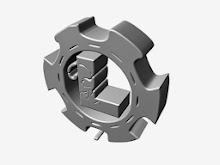Archive for September 2013
have u ever wonder,how we can control robots to move right left straight back.with out using steering in bots. i'll show u how we can control the direction of the bots .first we need to know abt h-brige.lets do that.
As you can see in the image, the circuit has four switches S1, S2, S3 and S4. Turning these switches ON and OFF can drive a motor in different ways.
H-bridge:
As you can see in the image, the circuit has four switches S1, S2, S3 and S4. Turning these switches ON and OFF can drive a motor in different ways.
- Turning on Switches S1 and S2 makes the motor rotate clockwise
- Turning on Switches S2 and S3 makes the motor rotate anti-clockwise
- Turning on Switches S1 and S2 will stop the motor (Brakes)
- Turning off all the switches gives the motor a free wheel drive
- Lastly turning on S1& S3 at the same time or S2 & S4 at the same time shorts your entire circuit. So, do not attempt this
HOW TO CONSTRUCT H-bridges for DC motors:
H-bridges can be built from scratch using relays, mosfets, field effect transistors (FET), bi-polar junction transistors (BJT), etc. But if your current requirement is not too high and all you need is a single package which does the job of driving a small DC motor in two directions, then all you need is a L293D IC
- type 1:-(4 inputs to control 1 motor)
A,B,C,D can be connected to micro controller and we can control the motors according to the program.
or
simple push switch connected between pt A and gnd...pt B and gnd ...similarly rest of the pt .by pushing the switches we can control the direction of the motor`
2. type 2:-( 2 inputs to control 1 motor)
just by two switches we can control clock wise and anticlockwise rotation of the motors
3. type 3:-( 4 inputs to control 2 motor)
Construction using l293d ic (4 inputs controlling 2 motors) :
L293D construction is similar to the h-bridge controlling 2 motors but using l293d is more preferable as it was so easy and occupies very few space in circuit
here pin 13 ,pin 12,pin 11,pin 10 are synonymous to pin A,B,C,D in above H-bridge controlling 2 motors
google for the datasheet of the L293D ic for more information.
how to control servo motors:
servos works based on pwm(pulse width modulation)
so it requires the pulses along with voltage.the best way to control the servo are using the 555 timmer.(click the link to know abt 555 timmer).
- blood oximeter (heart beat measuring from finger )
Introduction:
This project describes a technique to measure heart rate through fingertip. The blood volume inside a fingertip slightly changes with heart beat as the blood is being pumped. This change in blood volume inside the finger artery can be detected with a simple optical sensor system and can be further amplified using appropriate signal conditioning circuit to generate a pulse of magnitude +5V. These pulses can be later counted by a micro controller to display the measured heart rate .
Circuit diagram:
- audio DJ mixer:
Introduction:
Circuit diagram:
- distance counter while ur walking:
Introduction:
This circuit measures the distance covered during a walk. Hardware is located in a small box slipped in pants' pocket and the display is conceived in the following manner: the leftmost display D2 (the most significant digit) shows 0 to 9 Km. and its dot is always on to separate Km. from hm. The rightmost display D1 (the least significant digit) shows hundreds meters and its dot illuminates after every 50 meters of walking.
A beeper (excludable), signals each count unit, occurring every two steps. A normal step was calculated to span around 78 centimeters, thus the LED signaling 50 meters illuminates after 64 steps (or 32 operations of the mercury switch), the display indicates 100 meters after 128 steps and so on.
For low battery consumption the display illuminates only on request, pushing on P2. Accidental reset of the counters is avoided because to reset the circuit both push buttons must be operated together. Obviously, this is not a precision meter, but its approximation degree was found good for this kind of device. In any case, the most critical thing to do is the correct placement of the mercury switch inside of the box and the setting of its sloping degree.
Circuit diagram:
some times ,u might have 9v battery and u need only 5v to run ur load.then this voltage regulators place a crucial role.
normally 78xx series ics are used to regulate the voltages
here is the list of voltage regulator ics
for an example:
take 7805ic
minimum i/p is 7.3v and o/p is 5v
for the voltage above 7.3 the o/p will be equal to 5v
for an i/p voltage lesser than 5v o/p will be equal to input.
google the datasheet of the ics ,before u use them in ur project**
normally 78xx series ics are used to regulate the voltages
here is the list of voltage regulator ics
for an example:
take 7805ic
minimum i/p is 7.3v and o/p is 5v
for the voltage above 7.3 the o/p will be equal to 5v
for an i/p voltage lesser than 5v o/p will be equal to input.
google the datasheet of the ics ,before u use them in ur project**



















